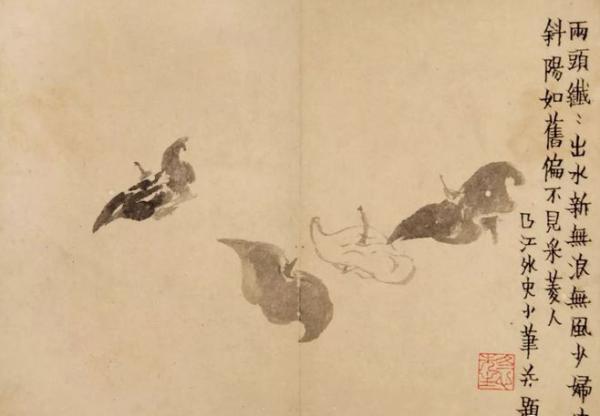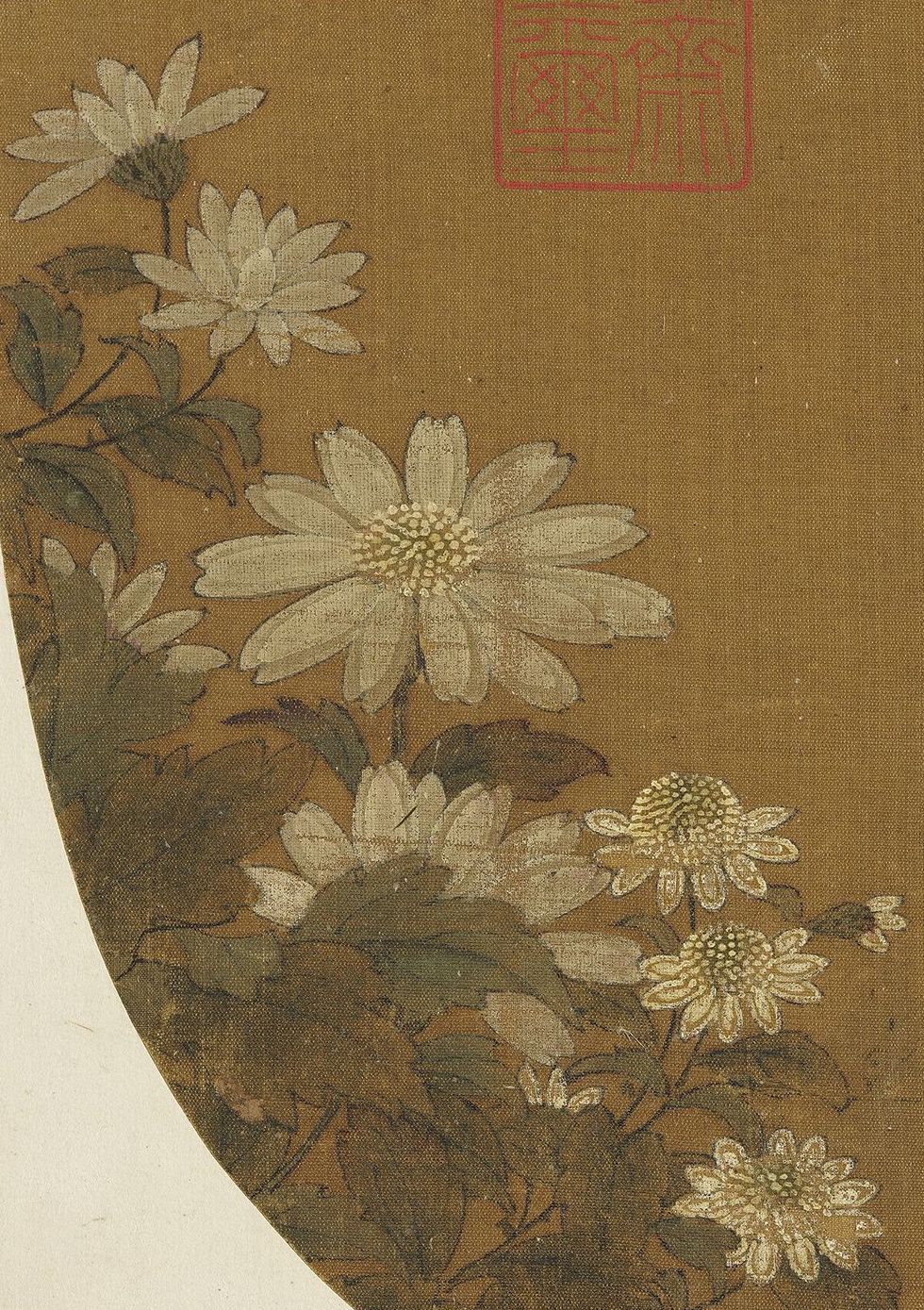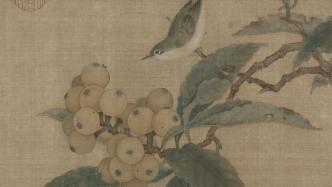
Today is the Beginning of Summer, the first solar term of summer. The "Collection of Explanations of the 72 Solar Terms in the Lunar Calendar" states that "Beginning means to establish and to start" and "Summer means to make a temporary change, and everything grows up at this time". From the Beginning of Summer, spring gradually fades away, summer begins, and everything grows up gradually, hence the name Beginning of Summer.
There are many customs about the beginning of summer, such as the custom of "eating eggs at the beginning of summer" and "egg fighting". In the Jiangnan region, there is also the custom of tasting "three new things" at the beginning of summer: "three new things" generally refer to fresh food, such as tender broad beans, early-ripening loquats, amaranth and other newly-released fruits and vegetables. Many famous artists in history have included broad beans and loquats in their paintings, especially loquats. For example, Lin Chun and Cui Bai in the Song Dynasty and Shen Zhou in the Ming Dynasty all have paintings of loquats.
The Lüshi Chunqiu records: "On the day of the beginning of summer, the emperor personally led the three dukes, nine ministers and officials to welcome summer in the southern suburbs." The Book of the Later Han Dynasty: Records of Sacrifices has a more detailed record of the beginning of summer ceremony: "On the day of the beginning of summer, summer was welcomed in the southern suburbs, and sacrifices were made to the Red Emperor Zhurong. The carriages and horses were all dressed in red, and the song "Zhu Ming" was sung, and the Eight Yi Dance "Yun Qiao" was performed."
In the Song Dynasty, the rituals of the Beginning of Summer Festival became more complicated. In addition to welcoming summer, people also worshipped Mount Heng in Hengzhou, Mount Kuaiji in Yuezhou, the South China Sea in Guangzhou, and Jiangdu in Chengdu. In the Ming Dynasty, the custom of tasting new things began to be practiced during the Beginning of Summer Festival. In the Qing Dynasty, the custom became more diverse, including offering sacrifices to gods, tasting new things, giving gifts, weighing people, and brewing new tea.
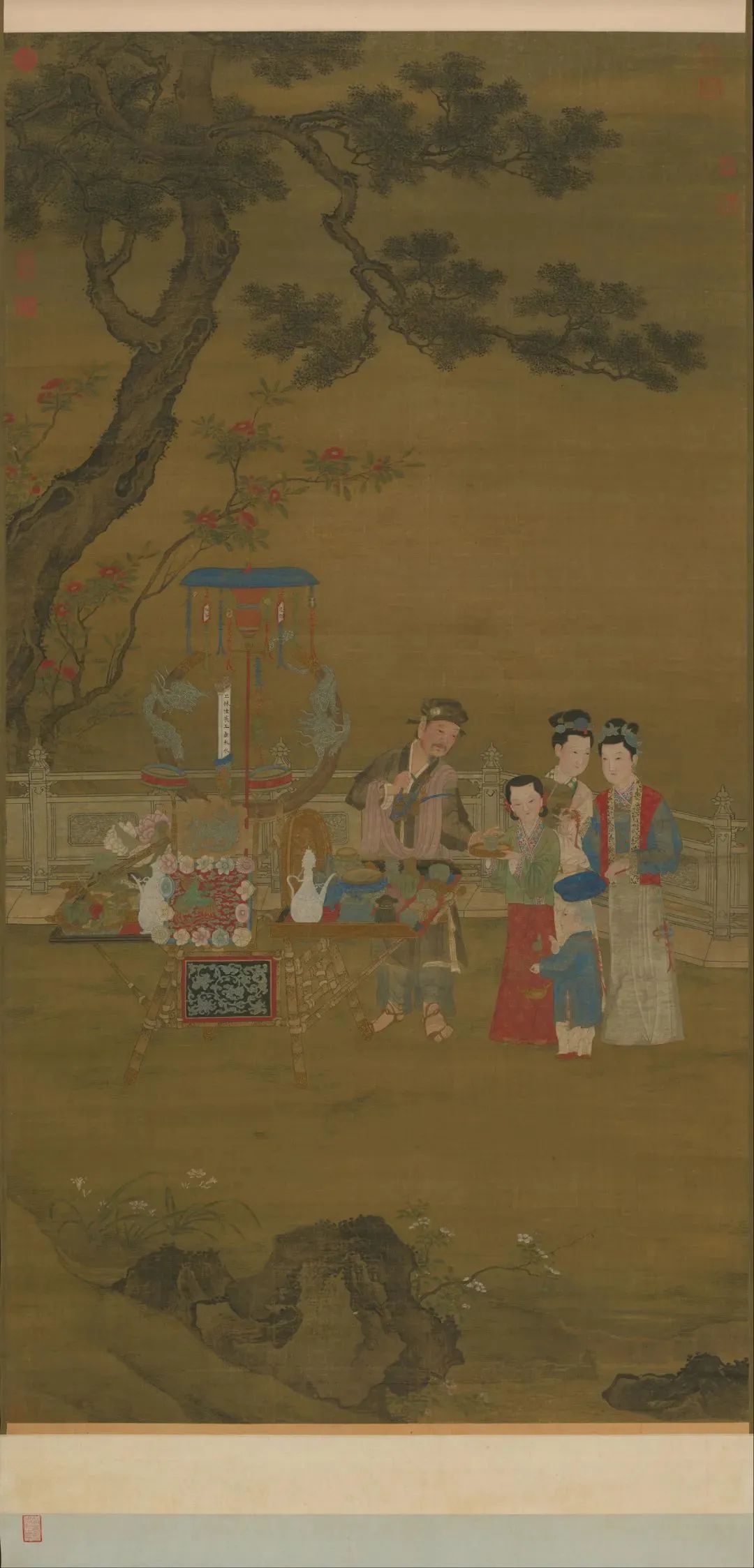
Ming Dynasty, Anonymous, Summer Scene, Peddler, 186.4×104.2cm, hanging scroll, ink and color, Palace Museum
Song Dynasty poet Lu You wrote in his poem "Beginning of Summer": "Red flags are inserted into the city gates, and the God of Spring is returning. Swallows are noisy in the new mud nests, and bees are sparse after the flowers have faded. The shades of locust trees and willows are dense, and the heat is not yet slight behind the curtains. As the sun sets, I finish my bath and try on my single clothes."
The anonymous painting "Summer Peddler" from the Ming Dynasty in the Palace Museum can be one of the annotations to the customs of the Beginning of Summer: This painting depicts the early summer, in which a peddler pours ice water for a teenage girl, who is wearing a green silk tulle and a red and gold skirt with a pattern of Baoxiang satin. On the shelves below the "peddler's" hands, there are long-spouted silver pots, blue-glazed double-handled incense burners, gold-plated nipple-shaped elephant-ear jars, golden melon-shaped pots, and gold bottles, etc., and there are also tea cups with trays of various colors (flare glaze, white glaze, green glaze, imitation Ge glaze, colored glaze, etc.) for "customers" to choose from.

Part of a painting of a peddler in summer by an anonymous artist from the Ming Dynasty
There is an old saying: "Hang an egg on your chest on the beginning of summer, and your child will not have summer fever." The ancients believed that eating eggs on the beginning of summer could pray for peace in summer and withstand the test of summer fever. In addition, a salt duck egg should be hung around the neck, or an egg fight should be held. The egg has two ends, the pointed one is the head and the round one is the tail. In the egg fight, the egg heads fight the egg heads, and the egg tails fight the egg tails. Fight one by one, and the broken one admits defeat, and the winner is finally decided.
In some areas of Zhejiang, there are sayings such as "If you eat salted pork and silkworm rice, the silkworms will remain on the plate all year round" and "Eating eggs at the Beginning of Summer is better than eating chicken", which are all referring to the folk customs of the Beginning of Summer solar term.
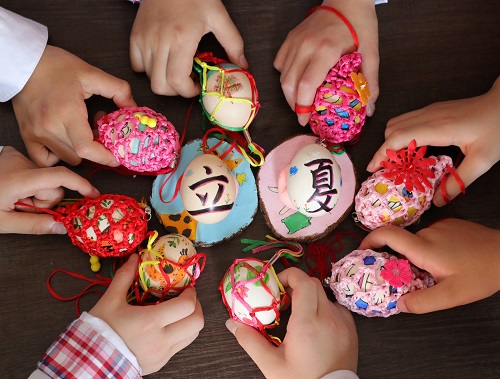
The custom of fighting and painting eggs during the beginning of summer in some areas of Zhejiang
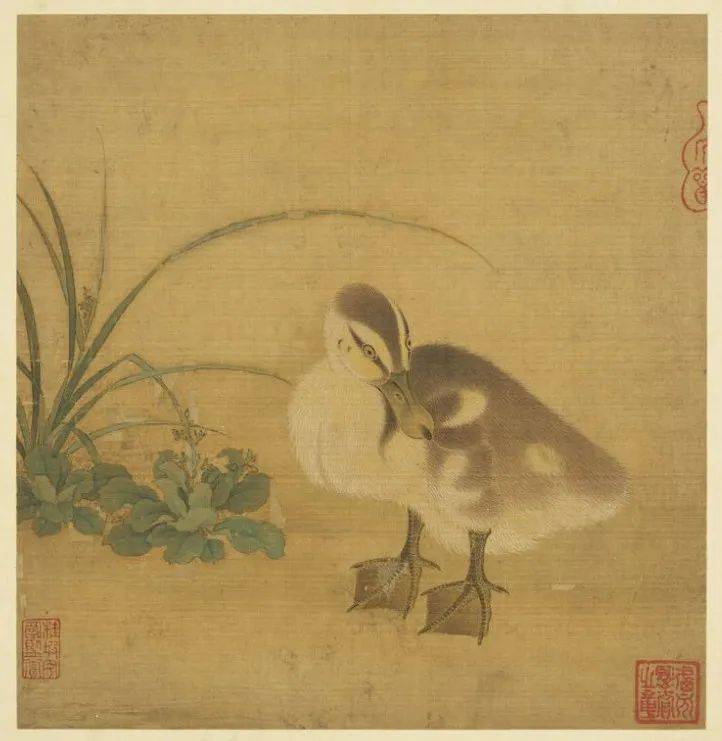
(Southern Song Dynasty) Anonymous "Duckling Picture" Collection of the National Palace Museum, Taipei
In the Jiangnan region, there is a custom of tasting "three new things" at the beginning of summer, such as tender broad beans, early-ripening loquats, amaranth and other newly-released fruits and vegetables. Few painters paint broad beans, but the painting "New Beans Flooding" by the famous modern painter Zhang Dazhuang in 1974 depicts the fresh color and full moisture of green broad beans with a vivid boneless technique. The broad beans in the picture spread from the distant view to the near view, as if they are about to pour out of the picture, showing the "abundance" of the harvest and the "overflow" that cannot be piled up.

Zhang Dazhuang, New Beans Arriving, 1974, Collection of Shanghai Chinese Painting Academy
When the summer begins, loquats in the south of the Yangtze River begin to ripen. Speaking of loquats in Jiangsu and Zhejiang, the most delicious ones are of course produced in the Dongting Mountain area of Taihu Lake.
"Loquats grown in Dongting Lake are large. Those grown on your own are small, but have flavor." Loquats are easy to grow, and "other fruits must be grafted to grow, but this fruit can grow if planted directly." In addition, loquat trees are evergreen and their fruits are golden, making them suitable for viewing. They can be said to be a plant that is both delicious and beautiful.
There are many famous artists in the past dynasties who have included loquats in their paintings, such as Emperor Huizong of the Northern Song Dynasty, Lin Chun, Cui Bai, and Shen Zhou of the Ming Dynasty. There are paintings of loquats circulating. For example, the "Loquat Mountain Bird Picture" by Emperor Huizong of Song Dynasty shows that loquats are laden with fruits and lush branches and leaves. A mountain sparrow perches on a branch, looking back at the fluttering swallowtail butterflies with a lively expression. This picture reflects Cui Bai's pure and indifferent style. Most of the flower and bird paintings of Emperor Huizong of Song Dynasty, Zhao Ji, are painted in color, but this picture is made purely in ink and wash, with an elegant style, slightly similar to the effect of boneless painting, and has a unique vigorous and delicate charm, reflecting Zhao Ji's multi-faceted painting talents.

Page from "Loquat Mountain Birds" by Zhao Ji of the Song Dynasty, Collection of the Palace Museum
On the opposite page there is a poem inscribed by Emperor Qianlong of the Qing Dynasty: "The fruit is round and oval, hence the name of loquat. It is only said that its shape resembles the oval, why bother asking about its sound. The bird is stable in its own right, and the butterfly's fluttering shadow is light. Xuanhe was good at positioning, why did he lose the capital?" It makes one feel that Song Huizong was so skilled in painting, composition and positioning, why did he lose his country?

Song Linchun's "Loquat Mountain Bird Picture" page, the Palace Museum collection
Lin Chun's "Loquat Mountain Bird" depicts the scene in May in Jiangnan, where ripe loquats are particularly attractive under the summer sun. A white-eye perched on a loquat branch with its tail raised and neck stretched out, about to peck at the fruit, but found an ant on it, so it turned its beak back and looked at it intently, with a very lively and interesting expression. The loquat branch seemed to tremble up and down as the white-eye moved, and the picture was still and moving, full of fun. The feathers of the white-eye were first smudged with color and ink, and then depicted with fine but not rigid small brushstrokes, showing the different textures of the bird's back feathers being dense and smooth, and the belly feathers being fluffy and soft. The loquat fruit was outlined with a khaki line, then filled with golden yellow, and finally painted with ochre for the navel. The three different warm colors blended well, thus showing the plumpness and sweetness of the ripe loquat fruit. The loquat leaves are depicted with neat and delicate heavy color method, which not only faithfully depicts the various natural shapes of the leaves' backs and fronts, but also meticulously outlines and smudges the damaged marks on the leaves caused by insect bites, fully reflecting the artistic level of realism achieved in Song Dynasty flower and bird paintings.

Song Dynasty Cui Bai's "Painting of Loquat and Peacock" scroll, collection of the National Palace Museum, Taipei
Cui Bai (active in the 11th century), courtesy name Zixi, was a native of Haoliang (now Fengyang, Anhui). He was selected to study art at the Painting Academy during the reign of Emperor Renzong (1022-1063 AD). He was good at painting flowers and birds, especially flowers and bamboo, mountain rabbits, withered lotus, water ducks, wild geese, etc. The scroll "Painting Loquat Peacock" depicts a pair of peacocks under a loquat tree, one perched on the trunk and the other walking among the flowers, with a ribbon bird flying overhead and various flowers blooming next to the Taihu stone. The whole painting is full of patterns and brightly colored, making the picture look very lively and gorgeous.
"Late Green" is Shen Zhou's summary and nickname for the appearance of loquat trees. The characteristics of loquat trees blooming in winter and bearing fruit in summer also make it unique. On a scroll of loquats in the collection of the Palace Museum, there is a poem written by Chen Zhang, a contemporary of Shen Zhou, from Songjiang. The sentence "Watching the flowers bloom in the dark winter, bearing fruit in the red summer" refers to this.

Ming Shen Zhou's "Loquat Scroll" Collection of the Palace Museum
Unlike the "Loquat Scroll", the loquats in the "Lying Travel Album" are painted in light colors, but the techniques and composition of the two works are quite similar. The entire album consists of the scenery of his hometown carefully selected and depicted by Shen Zhou. The painter borrowed the allusion of the Southern Dynasty Zong Bing, who was about to get old and could not experience the mountains and rivers in person, so he painted them on the four walls and named the whole album "Lying Travel". The motivation for the creation is probably to relieve the homesickness of friends in a way of both pictures and texts, and the sentence "Heaven also longs the people of Wu" seems to imply that the person being painted should be the painter's fellow countryman. If this is true, it means that loquat can be a sustenance for the Wu people in a foreign land to express their thoughts about their hometown. This sustenance is not only because it is delicious, but also because it is as common in the hometown as mulberry trees.
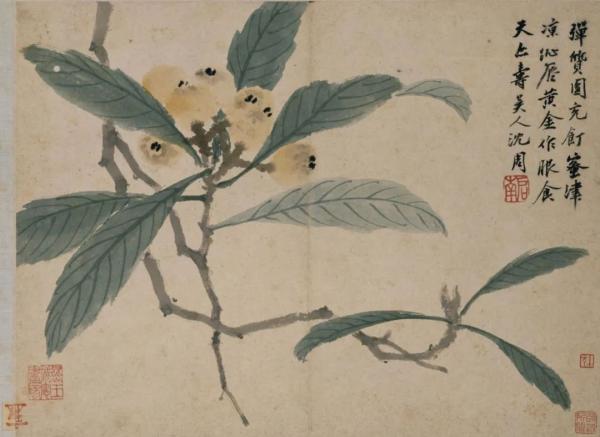
Ming Shen Zhou's "Lying Travel Album" - Loquat, collection of the Palace Museum, Beijing
(This article refers to the information of the Palace Museum, relevant folk customs introductions and past reports of The Paper)
